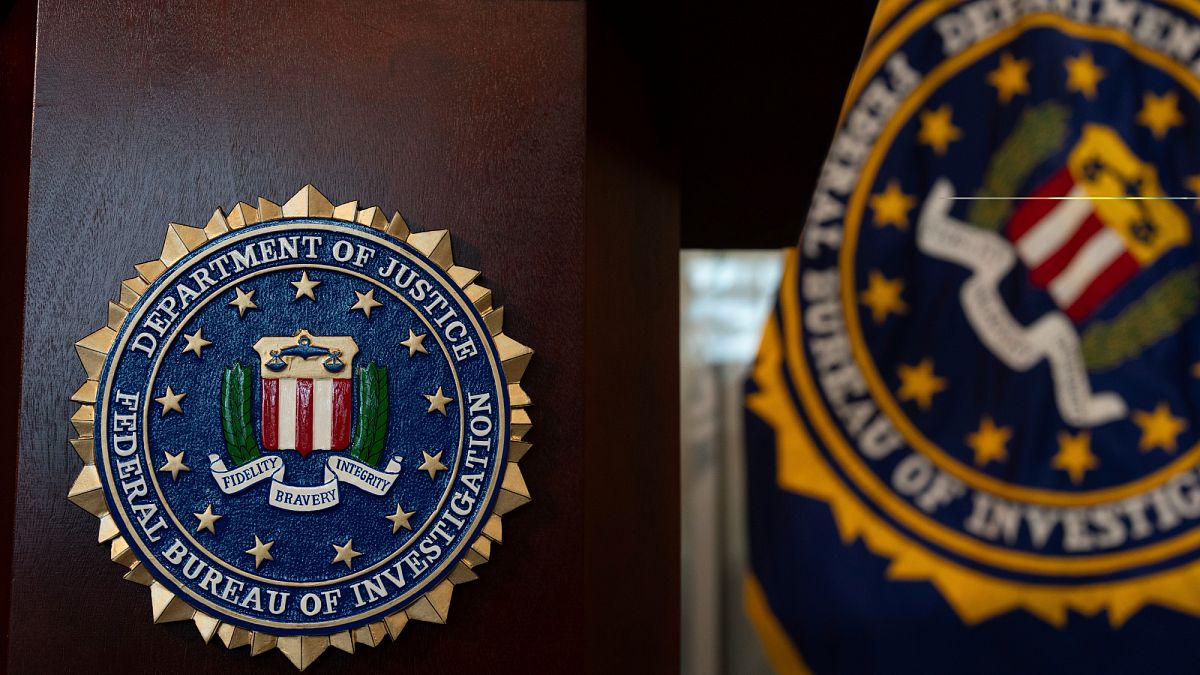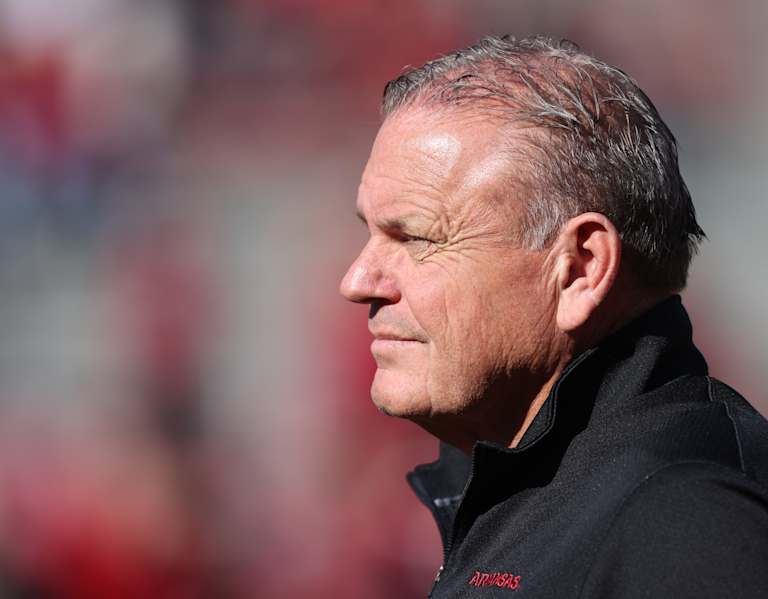Culture
Antes de que Carlos Alcaraz fuera impresionante, fue bastante bueno como para tener suerte

Carlos Alcaraz es tan bueno y tan joven, y gana tantas veces, que su éxito parece predeterminado.
Por supuesto, alguien así de rápido, con manos tan suaves como las de un artesano y un físico que lo coloca justo en la zona Ricitos de Oro de los grandes del tenis moderno —ni demasiado alto ni demasiado bajo—, se convertiría en el número uno del mundo más joven en los 50 años de historia del ranking de la Asociación de Tenistas Profesionales (ATP). También tiene buenos genes. Su padre fue tenista profesional a nivel nacional en España cuando era adolescente.
Así que esto estaba predeterminado para Alcaraz, el campeón de 20 años que llegó a París como el favorito inasequible para ganar el Abierto de Francia, ¿no es cierto?
Quizás no.
Como sucede tan a menudo en los deportes, y especialmente en el tenis, donde la exposición y el entrenamiento tempranos son esenciales, hubo un elemento de suerte que ayudó a crear al heredero deportivo de la troika conformada por Rafael Nadal, Roger Federer y Novak Djokovic y que ha gobernado el campeonato masculino durante la mayor parte de las últimas dos décadas.
Esa suerte finalmente tomó la forma del logo de una compañía local de dulces, que adornaba las camisetas que Alcaraz usaba durante sus partidos desde que tenía 10 años. Todo fue gracias a encuentros fortuitos con Alfonso López Rueda, el tenista presidente de Postres Reina, una empresa española de postres y dulces conocida por sus flanes y yogures. El interés de López Rueda por Alcaraz y el apoyo que le permitió viajar por Europa y comenzar a competir contra chicos mayores en escenarios desconocidos puede ser una explicación de la forma en que Alcaraz, desde el comienzo de su corta carrera, ha mostrado casi siempre una especie de serenidad alegre, incluso cuando el escenario se hizo más grande y el centro de atención más intenso.
“Algunas personalidades son muy buenas para eso, algunas tienen que aprender”, dijo Paul Annacone, quien entrenó a los grandes jugadores Federer y Pete Sampras, entre otros. “Él realmente parece disfrutar del ambiente (ganar, perder, lo que sea), parece aceptarlo”.
Al parecer, la mayor fortuna que puede tener un aspirante a tenista es haber nacido de padres que jugaron al más alto nivel. Los rangos profesionales, especialmente en el lado de los tenistas hombres, son terribles con los nepo babies, como se les conoce a los hijos de figuras exitosas que quieren ingresar al rubro de los padres. Casper Ruud, Stefanos Tsitsipas, Sebastian Korda, Taylor Fritz y Ben Shelton son descendientes de ex jugadores profesionales. Todos ellos tenían una raqueta en sus manos a una edad temprana y acceso casi ilimitado a alguien que sabía muy bien qué hacer con ella.
Para todos los demás, algo de suerte es clave.
Las habilidades que requiere el tenis profesional son muy especializadas, y el proceso largo y costoso de perfeccionarlas tiene que comenzar a una edad muy temprana. Pero el sistema de desarrollo de jugadores en la mayoría de los países está fracturado y, en el mejor de los casos, es regido por la casualidad, con programas escolares que son en su mayoría limitados. O una familia decide conscientemente exponer a un niño pequeño al tenis, o el niño no juega, al menos no en serio.
Así que no sorprende que tantas de las historias de creación en el tenis profesional parezcan involucrar una sucesión de eventos fortuitos e inconexos.
Frances Tiafoe probablemente no terminaría como semifinalista de Grand Slam si su padre, un inmigrante de Sierra Leona, se convertía en encargado de mantenimiento en un parque de oficinas en lugar de en un club de tenis local.
Novak Djokovic tuvo la suerte de conocer a Jelena Gencic, una de las mejores entrenadoras de Serbia, cuando tenía 6 años y ella dirigía un entrenamiento en las canchas cerca del restaurante de sus padres en Kopaonik, en las montañas serbias cerca de Montenegro.
Arthur Ashe estaba viajando por Camerún en 1971 cuando vio a un escolar de 11 años con talento en bruto para explotar. Llamó a su amigo Philippe Chatrier de la Federación Francesa de Tenis y le dijo que fuera a echar un vistazo. Ese chico era Yannick Noah, el último francés en ganar el Abierto de Francia.
Al igual que con los demás, los dones y habilidades sobrenaturales de Alcaraz jugaron el papel más importante en su buena fortuna. Cuando tuvo la oportunidad de impresionar, lo hizo, pero antes la suerte tuvo que brindarle una oportunidad.
La historia de esa oportunidad comienza con la decisión del abuelo de Alcaraz hace décadas de incorporar canchas de tenis y una piscina en un club de caza en El Palmar, un suburbio de la ciudad de Murcia. Hubiera sido más barato poner todas las canchas duras, pero a los españoles les encantan las de la arcilla roja, también llamada tierra batida. Entonces el abuelo Alcaraz (otro Carlos) se aseguró de incluir esas canchas en las instalaciones.
Ahora avancemos hasta hace una decena de años. López Rueda, loco por el tenis, es el director ejecutivo de Postres Reina, con sede en Caravaca de la Cruz. Pero a López Rueda no solo le gusta el tenis; le gusta jugar al tenis en arcilla roja. Vive en la misma región que el clan Alcaraz, y las mejores y más accesibles canchas de tierra batida para él están en un club en El Palmar, así que juega allí, comentó José Lag, ejecutivo de Postres Reina desde hace mucho tiempo y amigo de la familia Alcaraz, quien habló en nombre de su jefe, López Rueda.
En el club se hizo amigo del padre de Alcaraz y jugó como compañero de dobles de su tío. Asimismo, el hijo de López Rueda, que es tres años mayor que Alcaraz, contó con el mismo entrenador, Kiko Navarro, que no paraba de delirar con el talento de Carlitos. Un día, López Rueda accedió a ver jugar al niño y no se parecía a nada que hubiera visto antes. Carlitos lo tenía todo, pero los recursos de su familia eran limitados. Su padre era entrenador de tenis y administrador del club, y su madre estaba ocupada criando al niño y a sus hermanos menores.
López Rueda accedió a prestarle a la familia 2000 euros para viajar a un torneo, pero luego empezó a pensar en grande y decidió involucrar a su empresa para apoyar a este jovencito local que ya era capaz de vencer a competidores más altos, más fuertes y mayores.
Postres Reina había apoyado durante mucho tiempo a los equipos locales de baloncesto y fútbol, pero el tenis era el deporte favorito de López Rueda y la empresa nunca había patrocinado a un atleta individual. Alcaraz se convirtió en el primero, luciendo el logo de la empresa en sus camisetas.
El apoyo de la compañía, que duró toda la adolescencia de Alcaraz, le permitió seguir accediendo a los mejores entrenadores de su región y viajar por toda Europa para disputar los torneos más competitivos.
“No se hizo con un interés publicitario”, dijo Lag. “Era solo para ayudarlo. Nunca pensamos que sería el número uno”.
Al ver el éxito de Alcaraz, IMG, el conglomerado de deportes y entretenimiento, lo fichó a los 13 años, brindándole aún más acceso, especialmente a su actual entrenador, el exnúmero uno del mundo Juan Carlos Ferrero.
Existe una buena posibilidad de que Alcaraz se hubiera convertido eventualmente en un jugador de primer nivel si López Rueda nunca lo hubiera visto. La Real Federación Española de Tenis, que tiene una de las mejores fuentes de desarrollo de talentos del mundo, probablemente se habría enterado de él en poco tiempo.
Max Eisenbud, director de tenis de IMG, dijo que en cualquier historia de éxito en el tenis, el ingrediente más importante es una familia sólida dispuesta a tener una visión a largo plazo hacia el éxito de un chico.
“Esa es la receta secreta”, dijo Eisenbud durante una entrevista reciente, pero reconoció que la asistencia financiera para una familia que la necesita ciertamente puede ayudar.
Cuando un jugador avanza tan rápido como Alcaraz, pasando de estar fuera del top 100 en mayo de 2021 al número uno solo 16 meses después, se puede atribuir un papel en el resultado a cada detalle de su desarrollo.
Los compañeros de Alcaraz han visto con asombro cómo ha elevado su nivel de juego en cada torneo, en una era en la que el foco de atención constante tortura a muchos de ellos. Durante los primeros meses de Alcaraz desafiando los peldaños más altos de la gira, Alexander Zverev se maravilló de su habilidad para jugar “simplemente por diversión”.
Alcaraz dijo que sin importar lo que la gente viera, acostumbrarse a los ambientes cada vez más estridentes y llenos de presión tomó algún tiempo, pero aprendió rápido. Una paliza de Nadal en Madrid hace dos años ayudó, pero su mentalidad nunca cambió.
“Siempre quise jugar en los grandes estadios”, dijo. Y ha parecido que realmente fue así.
Para Alcaraz, el tenis es principalmente una alegría, desde su primera victoria en un torneo de Grand Slam en una cancha trasera en el Abierto de Australia en febrero de 2021, hasta sus victorias consecutivas sobre Nadal y Djokovic en el Abierto de Madrid en 2022, a su enfrentamiento en la semifinal contra Tiafoe en el Abierto de Estados Unidos en septiembre pasado frente a 23.000 fanáticos y con Michelle Obama sentada en la primera fila, hasta su triunfo en la final dos días después.
¿Cómo es posible? Allen Fox, campeón de la División I y cuartofinalista de Wimbledon en 1965, que más tarde se convirtió en uno de los principales psicólogos deportivos, utilizó el término que utilizan los profesionales cuando no existe una explicación racional. Describió a Alcaraz como un “genio” y una “rareza genética”.
“La única forma en que pierde es cuando falta”, dijo Fox. “Juega su mismo juego de alto riesgo y nunca quita el pie del acelerador”.
Matthew Futterman es un periodista deportivo con larga experiencia y autor de dos libros, Running to the Edge: A Band of Misfits and the Guru Who Unlocked the Secrets of Speed y Players: How Sports Became a Business.

Culture
Can You Match These Canadian Novels to Their Locations?

A strong sense of place can deeply influence a story, and in some cases, the setting can even feel like a character itself. This week’s literary geography quiz highlights novels with settings in Canada. To play, just make your selection in the multiple-choice list and the correct answer will be revealed. Links to the books will be listed at the end of the quiz if you’d like to do further reading.
Culture
How Manga Megastar Junji Ito Makes Terrifying Series Like ‘Uzumaki’

The horror cartoonist Junji Ito, creator of popular series like “Tomie” and “Uzumaki,” is one of manga’s biggest stars in the United States. And even those who don’t know his name might find his art oddly familiar, because adaptations of his work have repeatedly crossed over into more mainstream culture — often entirely out of context.
Culture
Do You Know the English Novels That Inspired These Movies and TV Shows?

Welcome to Great Adaptations, the Book Review’s regular multiple-choice quiz about books that have gone on to find new life as movies, television shows, theatrical productions, video games and more. This week’s challenge is focused on popular books set in 18th- and 19th-century England that have been adapted for the screen. Just tap or click your answers to the five questions below. And scroll down after you finish the last question for links to the books and their filmed versions.
-

 World1 week ago
World1 week agoNeo-Nazi cult leader extradited to US for plot to kill Jewish children
-

 Business1 week ago
Business1 week agoPlastic Spoons, Umbrellas, Violins: A Guide to What Americans Buy From China
-

 World1 week ago
World1 week agoCade Cunningham Gains $45 Million From All-NBA Honors
-

 Movie Reviews7 days ago
Movie Reviews7 days agoMOVIE REVIEW – Mission: Impossible 8 has Tom Cruise facing his final reckoning
-

 Movie Reviews1 week ago
Movie Reviews1 week agoKapkapiii movie review: Horror-comedy signals a saturation point for the genre
-

 Movie Reviews1 week ago
Movie Reviews1 week ago‘Magellan’ Review: Gael Garcia Bernal Plays the Famous Explorer in Lav Diaz’s Exquisitely Shot Challenge of an Arthouse Epic
-

 Rhode Island1 week ago
Rhode Island1 week agoAssessors find ‘nonconformities’ with national standards at RI Crime Lab. What to know.
-

 Education1 week ago
Education1 week agoVideo: Judge Blocks Trump Move to Ban Foreign Students at Harvard














